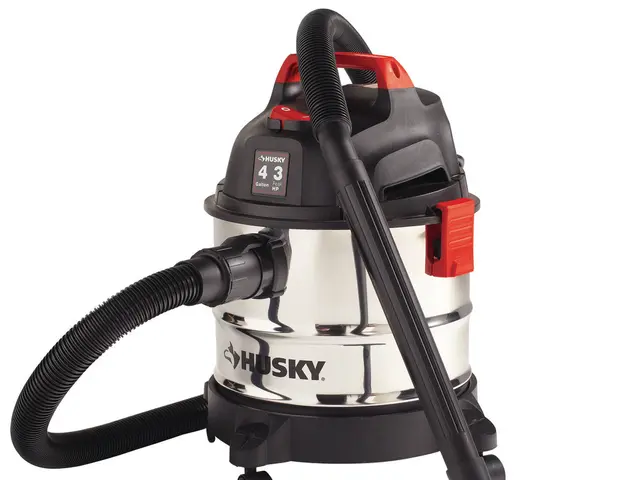Tent Components Breakdown: Understanding Their Functions and Role
Ready to dive deep into the world of camping tents? This guide breaks down all the different parts and components that make up a tent, using the Slumberjack Daybreak 4 and the North Face Wawona 4 as examples. Buckle up!
A Comprehensive Tent Anatomy Guide
While tents may seem simple, they actually have an array of parts that contribute to their overall structure and performance. We'll discuss everything from the rain fly and vents, to the tent poles, walls, and even the tent's floor. Buckle up!
Understanding the Outer Tent
The North Face Wawona 4 is an excellent example of a double-walled tent, consisting of an outer and an inner tent. Let's explore the components that make up the outer tent.
Rain Fly
The rain fly is the outermost protective layer of the tent, and it's waterproof. It fits snugly over the tent, shielding the mesh doors and windows from wet and windy conditions. Sometimes the rain fly only partially covers the tent, while other tents have full coverage for increased weather resistance. Additionally, the rain fly is secured to the inner tent using clips and small Velcro loops that attach to the tent poles.
Vents
Vents play a crucial role in ensuring air circulation within the tent. These are essential for camping in warm weather as they allow for the escape of warm air and condensation through the upper part of the tent, keeping the interior cool and dry. They have a mesh layer to keep bugs out and are usually angled downwards to prevent rain from entering. Lower air vents found on the walls help pull in cooler air from the ground and contribute to better ventilation.
Guy Lines and Tent Pegs
Guy lines (or guylines) are extra pieces of rope used to anchor the tent, providing additional stability in windy conditions. They can be pre-attached or included as loose rope in your tent purchase. Tent pegs, or stakes, are small and metal and are used to secure the tent to the ground for stability during wind gusts.
Vestibule - Your Tent's Front Porch
Think of a vestibule as a front porch for your tent, extending from the doorway and providing additional covered space for equipment storage. Backpacks, dirty shoes, and even bikes, depending on the size of the tent, can fit inside a vestibule. Some tents feature multiple doors, each with their own vestibule, while others may have a single larger vestibule.
Exploring the Inner Tent
The inner tent houses the sleeping area and is home to multiple essential tent components.
Tent Poles
Tent poles are the framework that provides the tent's structure. They can be made from various materials like fiberglass, aluminum, or steel, and they may be set up differently for different tent models. Generally, you slide one end of the pole into a corner grommet, then bend it so the other end slides into the opposite corner's grommet. Pole clips are then used to secure the inner tent to the pole framework.
Tent Pole Sleeves and Clips
Pole sleeves are tubes through which the poles are inserted. More traditional frame tents may use pole sleeves, while newer tents tend to utilize pole clips. Pole clips are small attachments that connect the tent body to the pole frame, making setup quicker and easier.
Tent Walls
The walls of the tent create the barrier for the sleeping area and typically have some mesh for ventilation in three-season tents. The amount of mesh may vary, with some tents having a mesh layer fixed permanently and others featuring mesh as a separate panel that can be detached. Four-season tents, intended for use in cold climates, will have less mesh in the walls for better insulation.
Tent Door
The tent door is the main entrance, usually equipped with a large zipper and door tie-backs. Depending on the tent design, you may find multiple doors or just one. Storm flaps on the door are a useful feature that offers extra protection against the elements.
Tent Floor
The tent floor, the bottom-most layer, protects the interior space from the ground, featuring a higher denier and waterhead rating than the walls for durability and water resistance. The matching footprint (or groundsheet) can help extend the lifespan of your tent by protecting the floor from wear and tear.
Extra Tent Accessories
Tent Footprint
A footprint (or groundsheet) is a separate piece of fabric that sits underneath the entire tent. Some tents come with a footprint included, while others do not. Investing in a footprint can help extend the lifespan of your tent's fabric.
Gear Loft and Storage Pockets
A gear loft (or storage pocket) hangs from the tent's ceiling, providing an organized space for storing small items. Many tents have storage pockets sewn into the sides for additional organization.
Ceiling Hooks
Ceiling hooks offer a convenient place to hang a lantern or other gear, providing ambient lighting within the tent.
Carry Bag
A carry bag comes with every tent, allowing you to transport the tent easily and efficiently.
E-Port Access
An E-port (or electrical port) is an opening in the tent wall that allows for the passage of extension cords, allowing you to power devices within your tent. Commonly found in larger family-style tents, they can come in handy when you need electricity within your tent.
Room Divider
Some larger tents come equipped with removable room dividers, which partition the tent into multiple rooms for added privacy and space.
Single-Wall Tents
Single-wall tents, like canvas tents or ultralight backpacking tents, feature a waterproof but breathable fabric that serves as both the outer and inner tent. Single-wall tents have a limited appeal, primarily benefiting those who prioritize weight savings, extreme cold and snow resistance, or year-round use in heavy-duty canvas tents. Read more about single-wall tents vs double-wall tents for more information.
Wrapping Up
We hope this guide has helped you better understand the various components that make up a tent. From rain flies and vents, to tent poles and walls, each part plays a crucial role in creating the perfect shelter for your outdoor adventures. Now get out there and conquer Mother Nature with the power and knowledge of a seasoned tent enthusiast!
Enrichment Data:
The advantages of a tent vestibule include:1. Protected gear storage: Vestibules provide a sheltered space for equipment like backpacks, dirty boots, and other gear, keeping it dry and away from the elements.2. Enhanced weather protection: A vestibule creates a barrier between the tent entrance and the outside environment, protecting you from wind, rain, and snow when entering or exiting the tent.3. Increased space and organization: Vestibules can add to the overall usable space of the tent, allowing for better organization and minimizing clutter inside the tent itself.4. Improved ventilation: Some tents with vestibules allow for better airflow by providing additional space for ventilation, helping to reduce condensation inside the tent.
- The Slumberjack Daybreak 4 and the North Face Wawona 4 are examples of tents used in this comprehensive guide.
- The guide focuses on explaining the different parts and components of tents, such as the rain fly, vents, tent poles, walls, tent floor, vestibule, and more.
- The rain fly is the outermost protective layer of the tent, protecting the tent from wet and windy conditions.
- Vents on the tent play a crucial role in ensuring air circulation and keeping the interior cool and dry during camping in warm weather.
- Guy lines and tent pegs help anchor the tent and provide stability, especially during windy conditions.
- A vestibule is an extension from the tent doorway, providing additional covered space for equipment storage.
- The inner tent houses essential components like tent poles, tent pole sleeves and clips, tent walls, tent door, and tent floor.
- Tent footprint, gear loft and storage pockets, ceiling hooks, carry bag, E-Port access, and room divider are additional tent accessories that cater to various needs.
- Single-wall tents, such as canvas tents or ultralight backpacking tents, have a waterproof but breathable fabric as both the outer and inner tent.
- Understanding the parts of a tent is vital for making informed decisions when shopping for tents, ensuring a comfortable and functional shelter for outdoor adventures.







